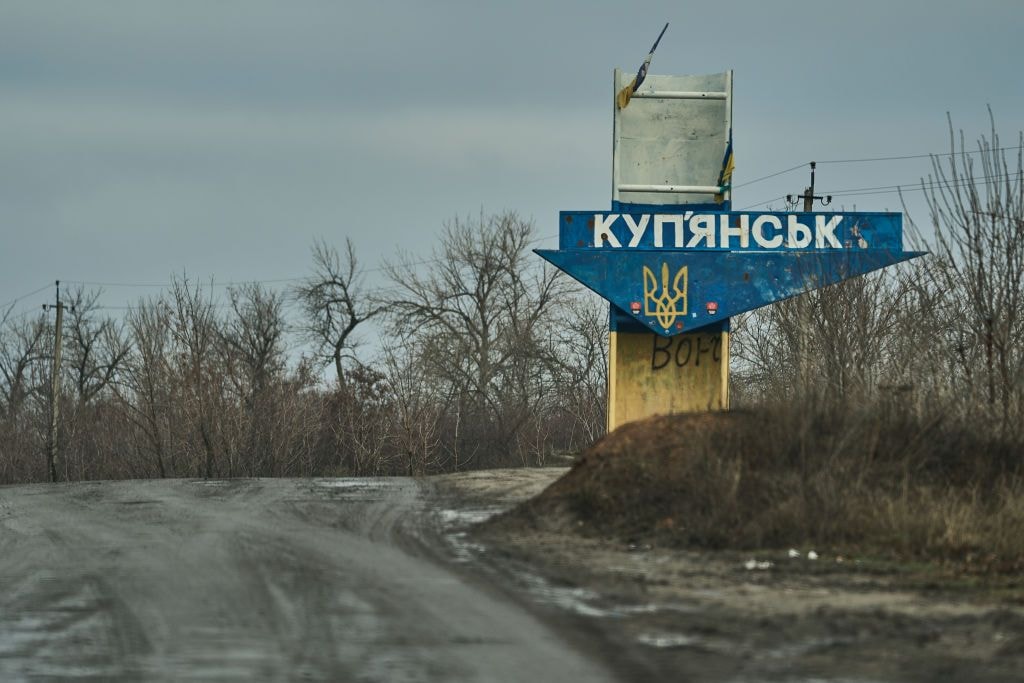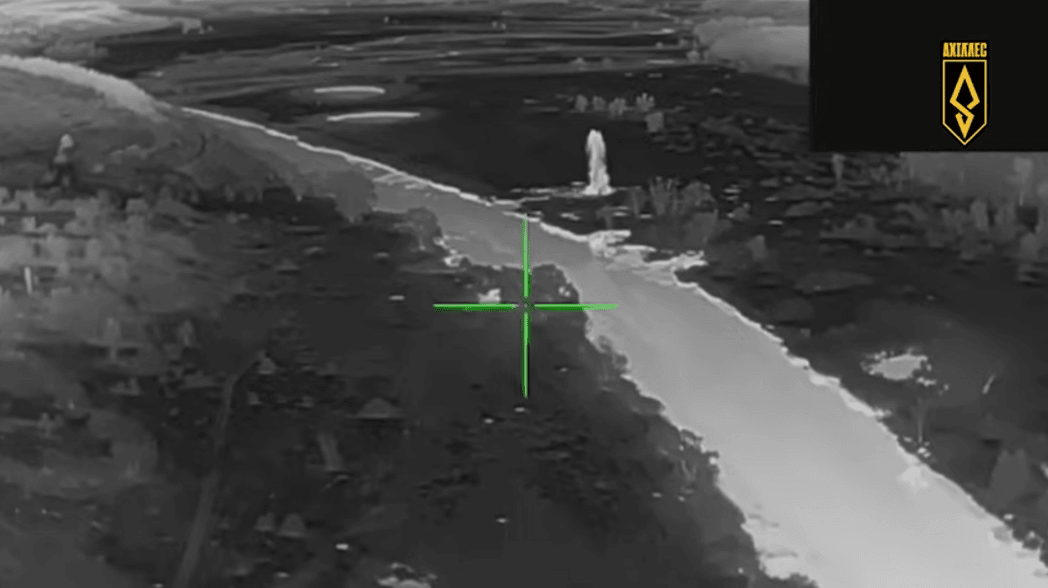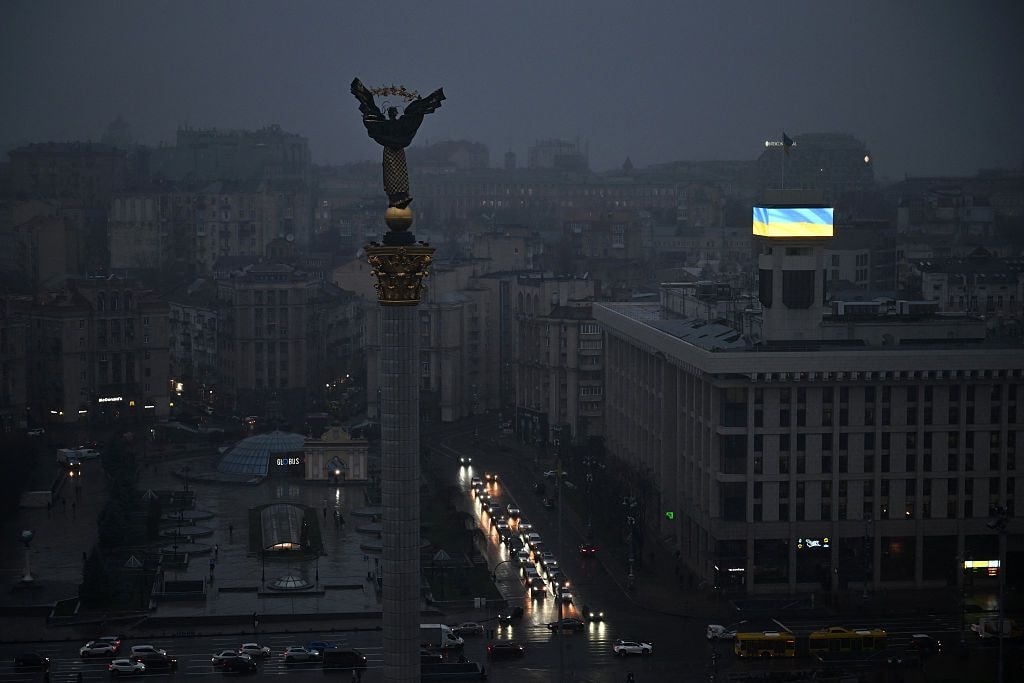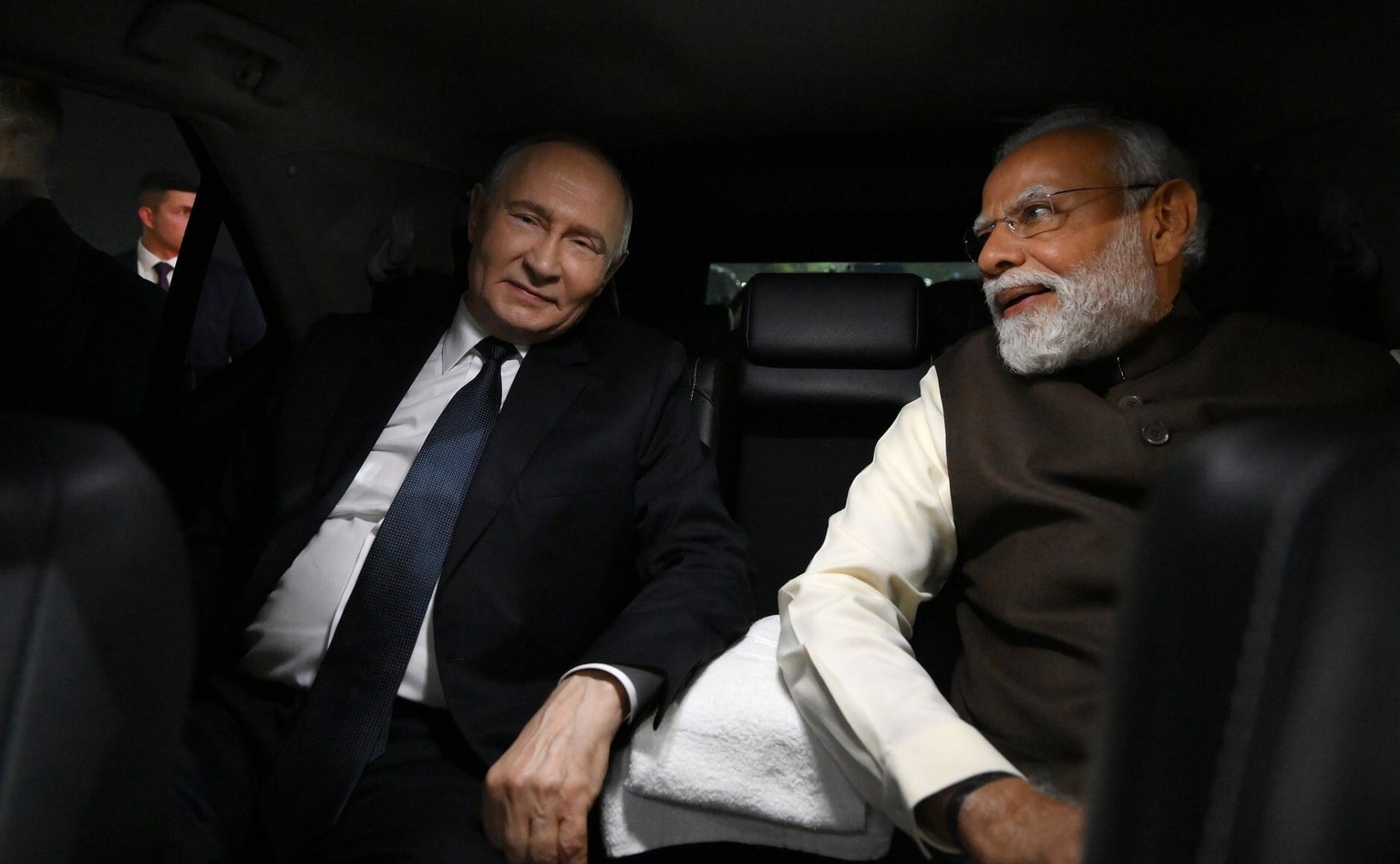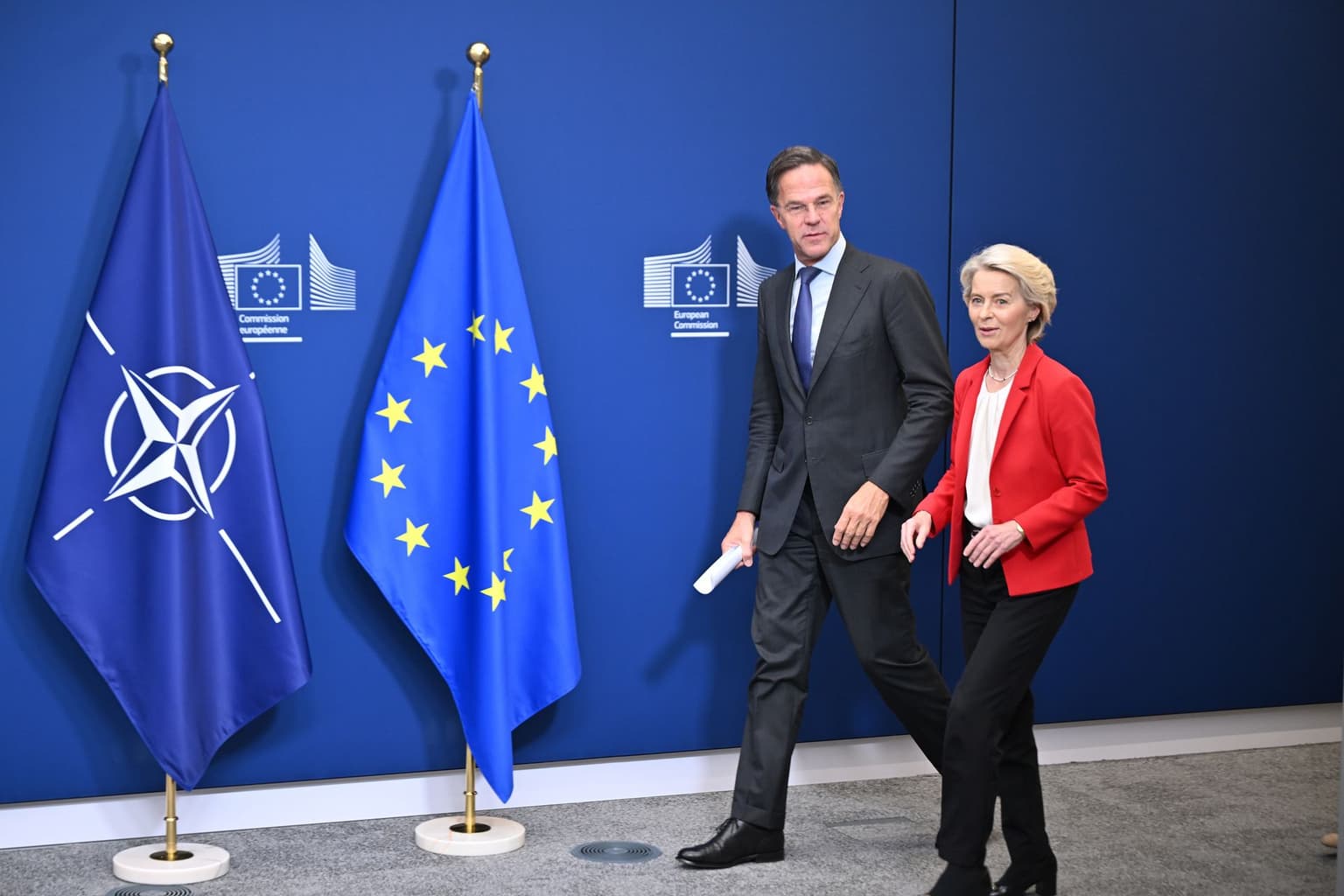
Don’t call it ‘drone wall’ — how Europe wrangles over proposals to protect its skies
European Commission President Ursula von der Leyen and NATO Secretary General Mark Rutte hold a joint press statement in Brussels, Belgium on Sept. 30, 2025. (Dursun Aydemir/Anadolu via Getty Images)
BRUSSELS, Belgium – As the European Commission unveils its new Defense Readiness Roadmap on Oct. 16, one key of cornerstone proposals — the “European Drone Defense Initiative” — is likely to turn into a political battleground of its own.
Initially conceived as a “drone wall” to shield Europe’s eastern flank after the recent Russian drone incursions exposing glaring vulnerabilities in Europe’s defenses, the plan has since broadened in both scope and ambition, aiming to protect the entire continent from the growing menace of unmanned aerial vehicles.
While the incursion caused little physical damage, it highlighted a fundamental imbalance: NATO and EU member states have costly, high-end air defenses but few affordable countermeasures for low-cost drones.
From ‘drone wall’ to ‘drone defense initiative’
European Commission President Ursula von der Leyen first floated the “drone wall” idea in September, echoing calls from eastern EU countries to create a defensive barrier stretching from the Baltic to the Black Sea.
But some of the bloc’s largest member states — France, Germany, Italy, and Spain — were not impressed, arguing the idea overlooked their own vulnerabilities, from airports to energy infrastructure.
By this week, EU officials had quietly rebranded the project as European Drone Defense Initiative, striking the original name from the draft proposal before its presentation, according to earlier versions of the document seen by the Kyiv Independent and first reported by Reuters on Tuesday.
"Having drone defenses is no longer optional."
Defense Commissioner Andrius Kubilius, who is leading the file, had to “juggle words” at a Brussels defense conference this week, as one EU diplomat put it, which reflected both the rebranding and the political balancing act behind it.
Under the current draft, the initiative envisions a continent-wide network of sensors, jammers, and defensive systems — from machine guns and lasers to interceptor drones — designed to detect, track, and neutralize hostile UAVs. It would also draw heavily on Ukrainian expertise, refined over nearly four years of repelling Russian drone swarms.
EU officials remain guarded about how much it will cost in the end and how fast it can be made fully operational.
Beyond drones, the new European Commission roadmap proposes a broader overhaul in the EU’s military planning and procurement in several areas, aiming for 40% of defense acquisitions to be joint by the end of 2027 — more than double today’s rate.
It identifies nine capability gaps to be addressed: air and missile defense, enablers, mobility, artillery, AI and cyber, missiles and ammunition, drones and anti-drones, ground combat, and maritime capabilities.

EU leaders will debate the plan next week at their Brussels summit.
“Drones are redefining warfare. Having drone defenses is no longer optional,” EU Foreign Policy Chief Kaja Kallas said after hosting a dinner with defense ministers on Oct. 15.
“Our target is to have functional anti-drone defenses by the end of 2027,” she added.
Parallel projects, overlapping ambitions
The European Commission’s proposal joins a growing ecosystem of anti-drone efforts across Europe.
NATO’s Eastern Sentry, a military activity launched last month in direct response to the Russian drone incursions limited to alliance territory, aims to strengthen its posture, connectivity, and flexibility along NATO's entire eastern flank. A number of NATO member states placed assets at the disposal of its Supreme Allied Commander in Europe (SACEUR) Alexus Grynkewich.
The Baltic Defense Line, jointly pursued by Estonia, Latvia, and Lithuania, combines traditional fortifications such as bunkers and trenches with surveillance technologies — acoustic sensors, signal intelligence, and interceptor drones — to secure borders with Russia and Belarus.
Poland’s East Shield has similar goals, focusing on protecting its 400-kilometer frontier with Belarus and the Kaliningrad exclave. Both projects are expected to take up to a decade to complete.
Von der Leyen’s own Eastern Flank Watch initiative, announced in her State of the Union speech, adds another layer: a “real-time space surveillance” system tracking aerial movements from the Baltic to the Black Sea. The European Commission has also floated a €6 billion ($7 billion) package for a “drone alliance” with Ukraine to develop joint production and technology-sharing arrangements.

“We have a lot of different names for a lot of different formats. I wish we'd have as much money — that would be much more helpful,” Lithuania's Defense Minister Dovilė Šakalienė quipped before Wednesday’s dinner with her counterparts.
“We have to find money quite fast, and that’s the main responsibility for the Commission,” added Finland’s Defense Minister Antti Häkkänen, noting that projects will need financing from existing or additional funds until the next EU budget cycle starts.
Front-line vs. ‘the rest of Europe’
Europe’s proliferation of drone projects now overlaps politically, geographically, and financially, effectively spreading them out between national, NATO-driven, and the Commission's new defense portfolio.
European defense officials across the board admit coordination will be the real test.
Behind the scenes, the “drone wall” debate has become a proxy for Europe’s perennial tension between national sovereignty and supranational defense.
Smaller countries, especially in the bloc’s east, want the Commission to take the lead in funding and integration. But major military powers such as France and Germany are cautious. They fear Brussels' encroachment on territory traditionally managed by national defense ministries and NATO.
“Ideally, NATO should be in charge and the EU should provide the money — but first we need to figure out what it is that we actually want and need from all of those initiatives that actually works in the end,” one EU diplomat quipped.
That sentiment is shared by many NATO officials: the EU can pay, but defense remains NATO’s job.
German and French skepticism has already tempered expectations. Neither German Chancellor Friedrich Merz nor French President Emmanuel Macron have endorsed the initiative, with Macron warning that “the threat of drones is more complex than the idea of a wall suggests.”
“Part of the problem is also about giving up member state competences to the European Commission at the expense of the biggest member states — an enduring issue for EU defense initiatives,” Giuseppe Spatafora, a research analyst at the European Union Institute for Security Studies (EUISS), told the Kyiv Independent.
He added that “for countries far from the eastern flank, drones are not seen as the highest priority — and they suspect most resources will flow eastward.”
"Europe needs its own Frontex for drone defense — a kind of Dronetex: modular, coordinated, and Europe-wide."
Fault lines among Europe’s defense ministers, who discussed the EU’s overall defense roadmap push last night over dinner, did not come to the fore, with even skeptics like Italy backing it, according to an EU official.
But most EU diplomats expect a political fight at next week’s EU summit, with pressure mounting on southern capitals — and with U.S. President Donald Trump reportedly watching Europe’s defense spending “enthusiasm” closely.

Earlier this week, Trump had again repeated Spain should “be punished” over its opposition to raising defense spending, adding that he had considered levying tariffs on its products.
Without broad support from capitals, the European Commission may also struggle to tap into major EU funding streams, though national budgets and the EU’s €150 billion ($175 billion) SAFE loans scheme could still offer partial financing.
“It’s unclear where this will go,” Spatafora said. “But the front-line countries will likely keep pushing for ‘drone wall’-style investments — and they now have critical mass.”
From concept to capability
Europe’s defense industry, meanwhile, sees opportunity, with a number of companies already positioning themselves to supply key components.
Experts agree that any effective system must be layered, modular, and constantly evolving. Lessons from Ukraine show how rapidly drone warfare adapts — when Russia upgraded its Shahed drones to fly faster, Ukraine’s interceptors quickly became obsolete.
“Europe needs its own Frontex for drone defense — a kind of Dronetex: modular, coordinated, and Europe-wide,” Rasmussen Global CEO Fabrice Pothier said of the European Commission’s proposal.
Brussels consultants recommend shifting from the notion of a “wall” to a multi-layered European network of interoperable sensors, interceptors, and command systems — a modular approach adaptable to urban, border, and front-line environments.
In practice, that means Europe’s defenses must be continuously upgraded, trained, and integrated with NATO’s air and missile systems.



